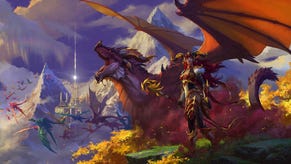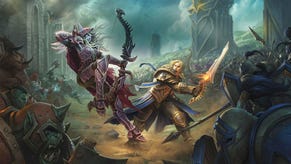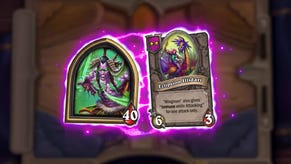Hearthstone strategies: advanced tips for seasoned card battlers
At its most fundamental, Hearthstone is simple arithmetic. Understanding this is the key difference between casual and competitive players. Once this concept clicks in your mind, you’ll be on your way to getting the most from Hearthstone’s many diverse strategies.
The key to Hearthstone, and most card games, really, is board control. The key to board control is ensuring the other player uses up more resources removing your cards than you use removing theirs.
For instance, let’s say you pull the underestimated Chillwind Yeti (a 4/5 minion for four mana). Your opponent plays an Acidic Swamp Ooze and a Novice Engineer. On your next turn, you could swing with the Yeti to remove the Ooze or the Novice, or you could take four points off your opponent’s hero.
By attacking the hero, you ensure your opponent loses at least some of their most valuable resource and keep your Yeti healthy for their next turn. This forces them to either drop one of only a few expensive removal spells, or use both of their minions to attack while still leaving yours on the board.
No matter what happens, the math is working against them. This is Hearthstone’s arithmetic at play, and every hero in the game is designed to perform these same equations in different ways. On that note, these Advanted tips will boost your card-playing power.
Hold it! Is this the first time you're playing Hearthstone? If so, read our Beginner's Tips.
Selecting Your Hero
Each Hearthstone hero plays differently from the rest, assuming you select the right cards. Which class is right for you depends on how you want to play. Here's a basic breakdown of each character with their strengths, weaknesses and unique abilities to help you decide where to spend your early matches.
Mage
Mages are the first class introduced to new players during the tutorial, and as such, are one of the more popular heroes in online play. That might also be thanks to their incredibly powerful removal spells, like Flamestrike and Fireball.
Their hero ability is Fireblast, which can deal one damage to any hero or minion -- even their own. Despite their powerful spells, Mages lack interesting, class-specific minions. They must rely instead on more basic neutral minions that offer increased spell damage to maintain board presence. This makes them a solid choice when entering The Arena, where high synergy is less of a concern.
Best if you like: fire-and-forget tactics, board clearance.
Shaman
Shamans take the randomized nature of card games a step further than most.
Their hero ability, for instance, summons one of four totems at random. These can provide extra spell damage, taunt, a 1/1 minion or the ability to heal every friendly minion at the end of your turn. Spells like Lightning Storm and Forked Lightning provide excellent board control, for random damage or against random minions, respectively.
This class also has the majority of cards with Windfury, which grants a minion the ability to attack twice in a single turn. Overload, meanwhile, is specific to Shamans and locks up mana crystals on your next turn, rather than right away. The benefit to cards with overload is that they usually have very small initial mana costs for very strong abilities.
A Shaman's strength is directly tied to board control. The totems summoned with the c hero ability, in addition to special totem cards, can turn a useful minion into a deadly one in a single turn. However, if you can shut down a Shaman’s board control early on, it's very difficult for them to transition into the late-game.
Best if you like: board control, delayed payment, lots of minion effects.
Paladin
Like Druids, Paladins are very well-rounded. Unlike Druids, they rely heavily on minions and hoping the opponent will do what you want them to do, rather than doing things directly.
This is because Paladins are highly defensive heroes. They have more instances of the Divine Shield keyword, which absorbs the first instance of damage dealt to a minion without harming it. Used with strong Taunt minions, this can force the enemy to burn powerful spells or creatures on relatively weak opponents.
This class also has the Reinforce hero ability, which summons a 1/1 minion to the field. Because of this, Paladins never lack for at least some board presence and damage ability. This is especially devious with a Paladin's high number of buff spells like Blessing of Kings.
Best if you like: always having minions, buff spells.
Warrior
Warriors behave much like their World of Warcraft namesakes. Their hero ability gives the player two armor, which unlike health, has no upper limit. Coupled with heroes and spells that also reinforce armor, it can be very tough to whittle a Warrior player's hit points down in a battle of attrition.
This class also uses some of the most powerful weapons in the game -- cards that give the hero damage-dealing potential -- which allows them to become some of the most formidable creatures in the game without hardly summoning any minions. And unlike Mages, they don't lack for powerful minions of their own. Generally, they rely on overwhelming numbers and abilities like charge to attack immediately when they're played, rather than high power and health.
The Warrior's weakness lies in its rigidity. This class has no fancy tricks and very little in the way of area-of-effect spells. What you see is what you get.
Best if you like: incredible staying power, not relying on minions.
Priest
A Priest's hero ability should tell you that they mimic their WoW counterparts, much like Warriors. For two mana, they can heal any unit of two damage (but only up to their maximum health). This can keep them and their minions in the game much longer than they otherwise should, and are thus incredibly hard to rush.
Their weakness lies in another of their strengths. Priests have many spells to buff the maximum health of their minions. By using these on a Lightspawn, or casting the Inner Fire spell, minions can translate this health into attack and become some of the most powerful creatures in the game. This kind of synergy must be used wisely, however. This strategy uses a great deal of resources, and an opponent can make it all for naught with a single copy of Assassinate, Polymorph, Hex or any other number of powerful removal spells.
Best if you like: healthy minions, staying power, removal spells.
Rogue
Rogues are the only class in the game with access to the powerful "combo" keyword. Cards with this attribute will activate a special ability when another card has been played that same turn. Headcrack, which deals direct damage to the opponent and returns to your hand if you combo it, is one of the most devastating such cards.
A Rogue's hero ability allows them to equip a one-damage weapon good for two uses. This sums up where its strengths lie, as they're more likely to rely on spells, weapons and combos than keeping a creature on the board for very long. This gives them limited board presence, but with return cards like Brewmaster minions and Vanish, they can bring combo'd cards back into their hands for multiple uses.
With the right cards and the right player, a Rogue's simplicity makes them one of the better heroes to select in The Arena. However, they're not designed for late-game battles of attrition.
Best if you like: card synergy, card return.
Druid
Druids are incredibly versatile. Many of their cards allow the user to pick between a pair of possible effects. Nourish, for instance, can either provide two mana crystals or draw three cards. Along with Innervate and Wild Growth, Nourish gives Druids the ability to rush extra mana early on and essentially rush into the late game ahead of the opponent.
Their hero ability provides the player with one attack for one turn and one point of armor. This isn't as effective as either the Rogue or Warrior's abilities, but provides a measure of both for the same cost. This is a good metaphor for the Druid’s play style. It has no real weaknesses per se, but many of its cards are just weaker -- yet more versatile -- versions of those found in other decks.
Best if you like: versatility, expensive and powerful cards, sprinting to the late-game.
Hunter
Hunters are one of the most creature-reliant heroes in Hearthstone. Even their primary area-of-effect spell, Unleash the Hounds, summons a number of cheap minions instead of dealing damage directly.
Specifically, they require beast cards. Most of their class-specific minions will buff this subcategory and make them an overwhelming tide of board presence. In addition, they have a number of trap spells designed to stall the opponent while producing more minions for the late-game.
Unfortunately, a well-timed Flamestrike, Abomination or other board clearing measure can wipe out a Hunter's entire horde in a single turn. To let you take out your frustration on that annoying Mage (and make up for their lack of direct damage) Hunters' hero ability deals two damage to the enemy hero for the same mana.
Best if you like: delaying tactics, having lots of minions at once.
Warlock
Hearthstone is primarily a battle for board control. Oftentimes this makes the game a battle of attrition. Not so with Warlocks.
This hero's ability allows them to draw an extra card every turn at the cost of two health and two mana. This presents two very important strategies. First, it effectively eliminates top-decking (running out of cards in one's hand and having to rely on whatever they draw each turn) and increases the odds of drawing important, powerful cards early on.
Warlock spells and minions also cost little mana, but usually require another sacrifice. A Succubus, for instance, is a 4/3 for two mana but discards a random card from the Warlock's hand. Used effectively, the combination of high card draw and low mana costs makes this the most effective deck for rush gameplay while forgoing most effects of attrition altogether in the late game.
Of course, if a Warlock ever finds itself with less than 15 hit points, they can always play Lord Jaraxxus. This changes the hero into a demon with 15 maximum health and the ability to summon a 6/6 for two mana and equip a three-damage weapon.
Despite their many strengths, Warlock decks are possibly the hardest class in Hearthstone to play effectively. A Hunter, for instance, can constantly drain a Warlock of its card-drawing resources. If the Warlock isn't careful, it can ultimately do more damage to itself than the opponent by eating through health and accidentally removing important cards.
Best if you like: rush tactics, kamikaze cards, living dangerously.
Arena Drafting Principles
The Arena is where any self-respecting Hearthstone player should spend the majority of their time. Its randomized nature makes it enticing for players looking for a challenge, while the rewards for just a few wins more than pays for its entry fee.
However, because decks are at least semi-randomized when entering The Arena, the rules of play are quite different. Players are not limited to just two copies of each card, neutral minions become much more effective and common card strategies can no longer be relied on.
This section should serve as a reference for some simple tips when entering The Arena, and how best to construct a deck that will survive the most competitive segment of Hearthstone.
Forget What You Know About Synergy
The most entertaining aspect of constructed play is building combos that work well off one another. Buying a Windfury minion time by buffing another unit with Ancestral Healing can be incredibly satisfying. Unfortunately, such tactics can’t be relied upon in drafted decks.
When thinking of synergy in The Arena, think of the cards that work well with others in just about any situation. Windfury is great when the minion in question lives long enough to use it, but it’s hard to guarantee that without Taunt. A Spellbreaker’s silence ability, however, will affect any minion with an ongoing ability, and at 4/3 for four mana, it’s a solid card in its own right.
Conversely, you can also expect the other player’s deck to be slightly less reliable. Sure, Mages will probably draw Fireballs now and again, but there’s no guarantee they have an Ogre Magi or Malygos to go with it – or even a second one in their deck.
The upshot is that you can often rely on cheaper, less interesting minions like Amani Berserker and Harvest Golem. Your opponent won’t want to waste a limited number of clearance and removal spells on “nonthreatening” cards, and you’re free to make amazing trades on the board.
By the way, remember that Chillwind Yeti we mentioned at the beginning? Always include him if you can. The Yeti is one of the best examples of a card that is always useful, and in The Arena, these unassuming minions win games.
Some Classes are Better than Others
Regarding the previous concept, some classes are better suited to Arena play than others.
Rogues, for instance, sport the Combo keyword. Cards like Headcrack, Defias Ringleader and SI: 7 Agent are useful in their own right, and will activate their special abilities when any other card is played first that turn.
Likewise, Mage spells are simple and geared toward removal and clearance, which makes them come in handy. In fact, The Arena suits the class perfectly, since the neutral minion cards they must rely on are usually at their best in this mode anyway.
Priests, Hunters and Warlocks, on the other hand, generally rely on specific card synergy to be at their most effective.
None of this is to say that any particular class is useless in The Arena. It’s only that in the random draft process, certain classes can avoid relying on luck more than others. In the end, it all comes down to who plays their respective deck better than the other.
Some Great Arena Cards
There is, of course, no guarantee you’ll get the cards you want in The Arena. However, there are certain cards that make for great choices in just about every deck, and should usually be chosen when the opportunity arises. Here are just a few of our favorites.
Spellbreaker
This is a great card – not just in The Arena. Its higher power and toughness make it a better choice than the comparatively inexpensive Ironbeak Owl, and having a Silence in your pocket is a necessity. Period.
Harvest Golem
It’s cheap, durable and (practically) immune to removal. This card rarely makes a noticeable splash alone, but it does force the opponent to trade at least two attacks or removal spells to get rid of it. This can severely drain an opponent’s resources without them ever even realizing their mistake.
Acidic Swamp Ooze
Weapons are very effective in The Arena. They’re nearly impossible to remove, they don’t cost a thing past their initial play, and they often come with special effects all their own. Acidic Swamp Ooze is one of the only effective counters against these useful little items while still being cheap and strong enough to be a solid second turn drop.
Chillwind Yeti
This is our third time bringing up the Chillwind Yeti in this guide. That’s how serious we are about this minion. The reason is that no other basic minion card can match it in stats for the same mana cost.
Boulderfist Ogre
Think of this as the Chillwind Yeti’s bigger brother. It’s not exactly awe-inspiring at first glance, but it’s incredibly cost-effective and that makes it perfect for The Arena. It also has enough health to survive most direct-damage spells – including the dreaded Fireball.
Mad Bomber
Not many people understand the Mad Bomber. That’s all right. You just need to understand that this is one of the only situational cards useful in an Arena deck. That’s because the number of situations he’s useful for is quite high. Use him to possibly activate your Enrage minions, burn an enemy’s Divine Shield or for a chance to wipe their one-health minions out on turn two.
Sen’jin Shieldmasta
This little troll is the best neutral minion with Taunt in the game, and one of the best such minions overall. You always want to have a bit of Taunt in any deck if you can help it, and one that has nearly the same stats as a Chillwind Yeti for the same price isn’t half bad.
Youthful/Ancient Brewmaster
Really, either Brewmaster variant will suffice. The Ancient variety has great stats for his cost, and as such, can be played when your side of the board is clear to negate his effect. The Youthful Brewmaster is less stoic, but half as expensive. Either version can be used to double up on other minions’ Battlecry and Combo effects, recharge Divine Shield or as a makeshift healing ability. These are the most reliable of the situational cards in the neutral card arsenal.
Congratulations! You’ve completed the advanced guide for Hearthstone and should have a better understanding of each class’s strengths and weaknesses, and how best to play in The Arena. Hopefully, you can take these basics, use them to form your own best strategies with every class and earn the many rewards available to those who brave the competitive scene.
Head back for the rest of our Hearthstone strategies.












